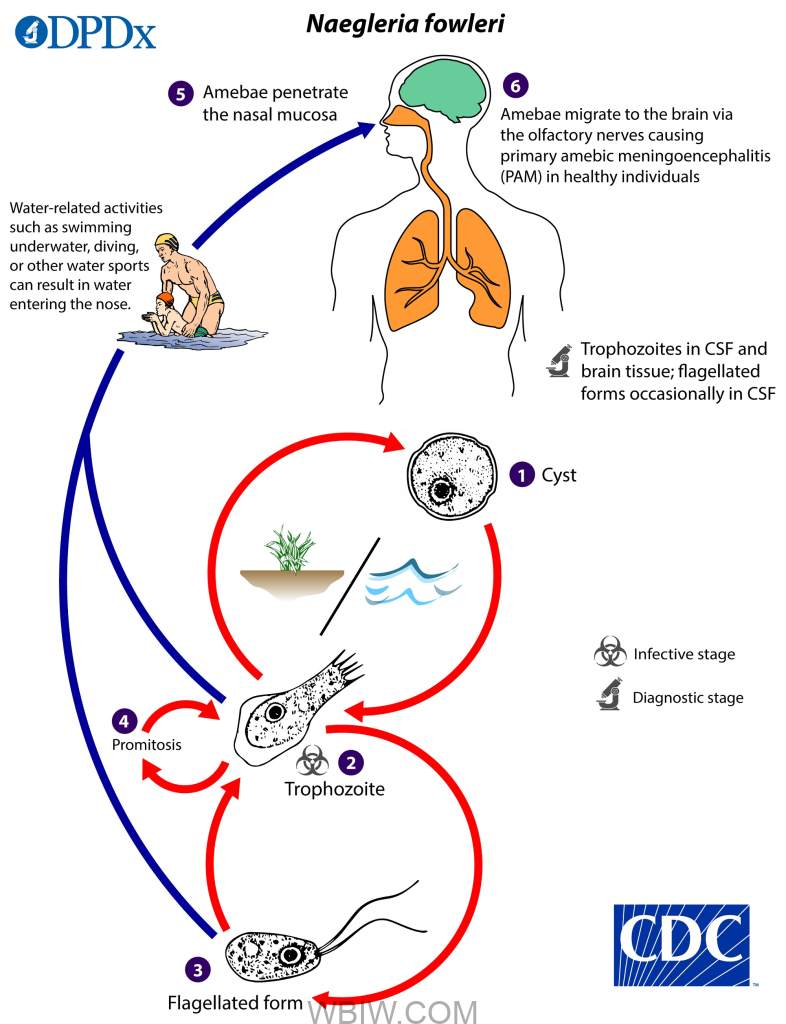
INDIANA – Deadly brain-eating amoeba infections are increasing across the United States including Indiana and it might be due to climate change.
Researchers from the Ohio Public Health Association described in a case report paper published May 16 in the Ohio Journal of Public Health that infections by the single-celled Naegleria fowleri amoeba have been on the rise in northern U.S. states, particularly Indiana, Minnesota, and Missouri.

N. fowleri is a single-celled organism usually found in warm freshwaters, such as lakes and rivers. It occurs during the summer when the temperature is hottest. It gets into the body via the nose and can cause a disease called PAM, which leads to severe illness and usually death. Luckily, you cannot get infected by drinking the water.
A parasite commonly referred to as the “brain-eating amoeba” infected a Loogootee man teaching his daughter to swim.
Waylon Abel, 30, of Loogootee, died from PAM.
Abel went to Jasper Memorial Hospital with a headache, nausea vomiting, and fever on August 4, 2012, and received antibiotics, the autopsy report said. He returned 12 hours later and was diagnosed with what doctors suspected was bacterial meningitis.

The Loogootee man’s condition worsened, and he was placed on a ventilator and airlifted on August 7 to St. Mary’s Medical Center in Evansville, where he died hours later, five days before his 31st birthday.
The autopsy report prompted the Daviess County Health Department to issue an advisory about PAM and then Superintendent Michael Axsom of the Daviess-Martin Joint County Parks and Recreation Department to order the beach closed for the season at West Boggs Lake.
Abel became ill about three weeks after taking his family to West Boggs Lake on July 15, 2012, to celebrate his daughter Faith’s 13th birthday.
Abel was the first person in Indiana to die from complications related to PAM.

PAM has a mortality rate of more than 97 percent, the Centers for Disease Control and Prevention (CDC) reported. Just four people out of 154 cases of N. fowleri infection recorded between 1962 and 2021 survived.

“This particular disease people will get when they will swim but not only swim but put their head down under the water,” said Dr. Waseem Ahmad, an infectious disease doctor at Ascension St. Vincent.
While the infection is rare, Dr. Ahmad said it is important to be aware of it. If someone is affected, seek medical help immediately.
Symptoms to look out for include fever, headache, nausea, vomiting, or stiff neck. Symptoms pop up just after a week of contact and will rapidly get worse. PAM is similar in symptoms to bacterial meningitis, killing via brain swelling, with N. fowleri also destroying brain tissue.



